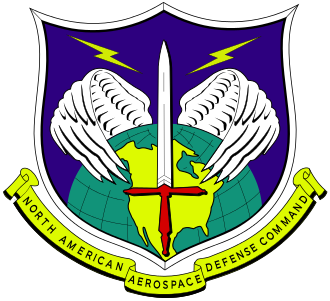|

WWIII3
Cyber Nuclear Holocaust is an original John Storm political thriller.
BREAKING DEFENSE 14 MARCH 2024 - AMID CHINESE ACTIVITY NEW NORTHCOM CHIEF CALLS FOR MORE EXERCISES NEAR ARCTIC
China is conducting regional maritime activities "under the cloud of a technical or scientific research, but we think it's certainly multi-mission to include military" operations, Gen. Gregory Guillot, head of NORTHCOM/NORAD said.
WASHINGTON — The new head of US Northern Command and NORAD, Gen. Gregory Guillot, is calling for an increased US military “presence” via exercises along
Alaska’s coast to help push back against growing Chinese and Russian military activity in the
Arctic.
“The best way for us to counter them is to have presence of our own. So, the execution of exercises [and] patrols, in all domains, is extremely important off all of our coast, primarily focusing right now in the region of Alaska,” Guillot told the Senate Armed Services Committee today.
“And the same thing applies on what we call the ‘two o’clock approach’ off on the northeast, making sure that we have presence there,” he said.
Guillot called for a “strong exercise program, multinational, a lot of partners, showing that we have the resolve to defend that most strategic area.”
Guillot took over the NORTHCOM and NORAD reins from Gen. Glen VanHerck on Feb. 5 and this week provided his first testimony about his command’s posture to both the Senate and House Armed Services Committees.
Guillot said he is worried about China’s military buildup in the Arctic zone — in particular repeating to senators his warning on Monday to their House counterparts that he expects the People’s Liberation Army soon will begin deploying aircraft along US Air Defense Identification Zones where NORAD tracks aircraft headed toward US airspace.
“Fortunately, we haven’t seen Chinese aircraft operate near our … Air Defense Identification Zones yet, but I think that that’s coming as early as this year. That shows an overall concern I have about the growing capability of China not only with the aircraft, but also with ships and even submarines being able to range further from China and closer to to our shores,” Guillot said in his HASC testimony.
In response to questions about PLA presence in the region from Sen. Mark Kelley, D-Ariz., who recently visited
US Navy forces in the Arctic, Guillot stressed that he has seen “a willingness and a desire by the Chinese to act up there.”
He elaborated that China is conducting regional maritime activities “under the cloud of a technical or scientific research, but we think it’s certainly multi-mission to include military” operations. “And then I expect to see air activity in the Alaska part of the Arctic as soon as this year potentially. It’s a very big concern of mine.”
Guillot noted that Russia also is stepping up its military forces in the Arctic.
“Just last week, for the first time in over two years, the Russians sent two Bear bombers down along that avenue through what we call the GIUK gap —
Greenland,
Iceland and the United Kingdom — approaching the Canadian and the United States Air Defense Identification Zones,” he said.
CHINESE HYPERSONICS AND RUSSIAN ICEBREAKERS
Guillot told the SASC that while NORTHCOM and NORAD have increased capabilities to track things, like Chinese surveillance balloons, there is still a “gap” in the ability to keep eyes on hypersonic missiles.
“I view hypersonics as perhaps the most destabilizing threat that we have out there because of the fast speed, and more than that, the maneuverability and the unpredictability on where it will impact — as opposed to a ballistic missile, which is fairly predictable,” he said.
Sen. Deb Fischer, R-Neb., cited House testimony Monday [PDF] by Jeffrey McCormack, a senior official at the National Air and Space Intelligence Center, asserting that China now “has the world’s leading hypersonic arsenal” to press Guillot on whether he believes the Defense Department needs to “accelerate development” of hypersonic defense systems.
“Senator, I support moving all of our capabilities against the strategic threats that you mentioned as far left as possible, based on the growing and consistently growing capabilities of our adversaries,” he answered.
In addition, Guillot said that the US military is woefully outnumbered by the Russian icebreakers in the Arctic.
“We do appreciate that the Coast Guard is procuring more icebreakers, but even with those we’ll be severely outnumbered. And that does limit our freedom of maneuver in that region,” he said.
Guillot’s testimony comes as the Pentagon gets ready to release an updated version of its Arctic Strategy, last issued in 2019. That strategy could be out as soon as the end of next month, according to a March 12 report in Defense News. That report quoted Iris Ferguson, deputy assistant secretary for Arctic and Global Resilience, as saying that the new strategy for the first time will lay out individual service acquisition requirements to meet the new challenges.
A RAND report issued in November said that the services have a host of urgent needs, including “assets with proximity to support response; multidomain awareness and communications; infrastructure for response and logistics; sufficient cadre of personnel trained, current, and proficient with the skills to operate in this harsh environment; tactics and equipment for low-probability, high-impact incidents; and the ability to scale presence.”
Meanwhile, Guillot told the HASC on Monday that he is conducting his own review of NORTHCOM and NORAD needs to address growing adversary challenges to the US homeland.
“Upon taking command, I began a 90-day assessment to inform the department, the Joint Force and Congress on NORAD and NORTHCOM’s ability to execute assigned tasks, and make recommendations on where the command could or should do more,” he said. “Once complete, I look forward to sharing my findings and updated vision for how NORAD and NORTHCOM will best execute the noble mission of homeland defense.”
NORAD
North American Aerospace Defense Command
(NORAD), known until March 1981 as the North American Air Defense Command, is a combined organization of the
United States and
Canada that provides aerospace warning, air sovereignty, and protection for Canada and the continental United States.
Headquarters for NORAD and the NORAD/United States Northern Command (USNORTHCOM) center are located at Peterson Space Force Base in El Paso County, near Colorado Springs, Colorado. The nearby Cheyenne Mountain Complex has the Alternate Command Center. The NORAD commander and deputy commander are, respectively, a United States four-star general or equivalent and a Canadian lieutenant-general or equivalent.
COMMAND
NORAD is headed by its commander, who is a four-star general or admiral in the
United States Armed Forces. The deputy commander is a Royal Canadian Air Force lieutenant general. Prior to the 1968 unification of the Canadian Forces, the deputy commander was an RCAF air marshal.
The commander is responsible to the Government of Canada (the Crown-in-Council), through the chief of the Defence Staff, and to the Government of the United States, via the chairman of the joint chiefs of staff. The commander and deputy are each subject to their respective country's laws, policies, and directives. Per the Canadian National Defence Act, the chief of the Defence Staff relays orders from the Crown-in-Council, collectively, or guidance from the minister of national defence, alone, to the officers of the Canadian Armed Forces.
REGIONS
NORAD maintains a headquarters at Peterson Space Force Base near Colorado Springs, Colorado. The NORAD and USNORTHCOM Command Center at Peterson SFB serves as a central collection and coordination facility for a worldwide system of sensors designed to provide the commander and the leadership of Canada and the U.S. with an accurate picture of any aerospace or maritime threat. NORAD has administratively divided the North American landmass into three regions:
- Alaska NORAD (ANR) Region – Eleventh Air Force (11 AF)
- Canadian NORAD (CANR) Region – 1 Canadian Air Division (1 Cdn Air Div)
- Continental U.S. (CONR) Region – First Air Force (1 AF/CONR-AFNORTH)
Both the CONR and CANR regions are divided into eastern and western sectors.
ALASKA
The Alaskan NORAD Region (ANR) maintains continuous capability to detect, validate and warn off any atmospheric threat in its area of operations from its Regional Operations Control Center (ROCC) at Joint Base Elmendorf–Richardson,
Alaska.
ANR maintains the readiness to conduct a continuum of aerospace control missions, which include daily air sovereignty in peacetime, contingency and deterrence in time of tension, and active air defense against manned and unmanned air-breathing atmospheric vehicles in times of crisis.
ANR is supported by both active duty and reserve units. Active duty forces are provided by 11 AF and the Canadian Armed Forces (CAF), and reserve forces provided by the Alaska Air National Guard. Both 11 AF and the CAF provide active duty personnel to the ROCC to maintain continuous surveillance of Alaskan airspace.
CANADA
Canadian NORAD Region Headquarters is at CFB Winnipeg, Manitoba. It was established on 22 April 1983. It is responsible for providing surveillance and control of Canadian airspace. The Royal Canadian Air Force provides alert assets to NORAD. CANR is divided into two sectors, the Canada East Sector and Canada West Sector. Both Sector Operations Control Centers (SOCCs) are co-located at CFB North Bay, Ontario. The routine operation of the SOCCs includes reporting track data, sensor status and aircraft alert status to NORAD headquarters. In 1996, CANR was renamed 1 Canadian Air Division and moved to CFB Winnipeg.
Canadian air defense forces assigned to NORAD include 409 Tactical Fighter Squadron at CFB Cold Lake, Alberta and 425 Tactical Fighter Squadron at CFB Bagotville, Quebec. All squadrons fly the McDonnell Douglas CF-18 Hornet fighter aircraft.
To monitor for drug trafficking, the Canadian NORAD Region monitors all air traffic approaching the coast of Canada, in cooperation with the Royal Canadian Mounted Police and the United States drug law enforcement agencies. Any aircraft that has not filed a flight plan may be directed to land and be inspected by RCMP and Canada Border Services Agency.
CONTINENTAL USA
The Continental NORAD Region (CONR) is the component of NORAD that provides airspace surveillance and control and directs air sovereignty activities for the Contiguous United States (CONUS). Since the
terrorist attacks of September 11, 2001, CONR has been the lead agency for Operation Noble Eagle, an ongoing mission to protect the continental United States from airborne attacks.
CONR is the NORAD designation of the United States Air Force First Air Force/AFNORTH. Its headquarters is located at Tyndall Air Force Base, Florida. The First Air Force (1 AF) became responsible for the USAF air defense mission in September 1990. AFNORTH is the United States Air Force component of United States Northern Command (NORTHCOM).
1 AF/CONR-AFNORTH comprises Air National Guard Fighter Wings assigned an air defense mission to 1 AF/CONR-AFNORTH on federal orders, made up primarily of citizen Airmen. The primary weapons systems are the McDonnell Douglas F-15 Eagle and General Dynamics F-16 Fighting Falcon aircraft.
It plans, conducts, controls, coordinates and ensures air sovereignty and provides for the unilateral defense of the United States. A combined First Air Force command post is at Tyndall Air Force Base. The US East ROCC (Eastern Air Defense Sector), Sector Operations Control Center (SOCC) is at Rome,
New
York. The US West ROCC (Western Air Defense Sector) control center is at McChord Field,
Washington. Both maintain continuous surveillance of CONUS airspace.
In its role as the CONUS NORAD Region, 1 AF/CONR-AFNORTH also performs counter-drug surveillance operations.

"We have gold because we cannot trust governments," President Herbert Hoover famously said in 1933 in his statement to Franklin D. Roosevelt. The Emergency Banking Act, forced all Americans to convert their gold coins, bullion, and certificates into U.S. dollars, to stop the outflow of gold reserves during the Great Depression. The writing was on the wall, but nobody could read it.
HISTORY
The North American Air Defense Command was recommended by the Joint
Canadian - U.S. Military Group in late 1956, approved by the U.S. Joint Chiefs of Staff in February 1957, and announced in August 1957. NORAD's command headquarters was established on 12 September 1957 at Ent Air Force Base's 1954 blockhouse. In 1958, Canada and the United States agreed that the NORAD commander would always be a United States officer, with a Canadian vice commander. Canada "agreed the command's primary purpose would be ... early warning and defense for the Strategic Air Command's
(SAC)'s retaliatory forces".
In late 1958, Canada and the United States started the Continental Air Defense Integration North
(CADIN) for the Semi-Automatic Ground Environment air defense network. The initial CADIN cost-sharing agreement between the two countries was signed in January 1959. Two December 1958 plans submitted by NORAD had "average yearly expenditure of around five and one half billions", including "cost of the accelerated Nike Zeus program" and three Ballistic Missile Early Warning System
(BMEWS) sites.
Canada's NORAD bunker at CFB North Bay with a SAGE AN/FSQ-7 Combat Direction Central computer was constructed from 1959 to 1963. Each of the USAF's eight smaller AN/FSQ-8 Combat Control Central systems provided NORAD with data and could command the entire United States air defense. The RCAF's 1950 "ground observer system, the Long Range Air Raid Warning System", was discontinued. In January 1959, the United States Ground Observer Corps was deactivated.
The Cheyenne Mountain nuclear bunker's planned mission was expanded in August 1960 to "a hardened center from which CINCNORAD would supervise and direct operations against space attack as well as air attack". In October 1960, the Secretary of Defense assigned, "operational command of all space surveillance to Continental Air Defense Command
(CONAD) and operational control to North American Air Defense Command
(NORAD)".
In December 1960, the Joint Chiefs of Staff (JCS) placed the Ent Air Force Base Space Detection and Tracking System (496L System with Philco 2000 Model 212 computer) "under the operational control of CINCNORAD ", during the Cheyenne Mountain nuclear bunker excavation, and the joint
SAC-NORAD exercise "Sky Shield II". In September 1962—"Sky Shield III" were conducted for mock penetration of NORAD sectors.
In 1963, NORAD command center operations moved from Ent Air Force Base to the partially underground "Combined Operations Center" for Aerospace Defense Command and NORAD at the Chidlaw Building. President John F. Kennedy visited
"NORAD headquarters" after the 5 June 1963 United States Air Force Academy graduation. On 30 October 1964,
"NORAD began manning" the Combat Operations Center in the Cheyenne Mountain Complex.
In 1965, about 250,000 United States and Canadian personnel were involved in the operation of
NORAD, On 1 January 1966, Air Force Systems Command turned the COC over to
NORAD. The NORAD Cheyenne Mountain Complex was accepted on 8 February 1966.
https://breakingdefense.com/2024/03/amid-chinese-activity-new-northcom-chief-calls-for-more-exercises-near-arctic/
https://breakingdefense.com/2024/03/amid-chinese-activity-new-northcom-chief-calls-for-more-exercises-near-arctic/

CHAPTERS
| CHARACTERS
| MEDIA
|
MOVIE REF |
SCREENPLAYS
|

